Crime
RCMP Historical Homicide Unit investigating deaths of three women

January 22, 2018
Edmonton, AB – Investigators from the RCMP’s “K” Division Historical Homicide Unit (HHU) are continuing to push forward with three separate investigations, each involving a woman who initially had been reported missing in Alberta but believed by police to have been victims of homicide.
The three cases, although not believed to be related, span a period of approximately 30 years; from 1983 to 2013. The victims in each case are women who vary in age from 16-years-old to 70 years-old and none of them have been found to date. All three cases remain unsolved, but it is the belief of S/Sgt. Jason Zazulak, who heads up the “K” Division HHU, as well as of the investigators who comprise the unit, that each case can and will be solved.
The first case is that of Shelly Ann Bacsu who was 16 years of age when she was reported missing to Hinton RCMP on May 3, 1983 after she failed to return home from a friend’s residence in Hinton; a walk of seven kilometres which she had done many times before. Family members became concerned when Shelly Ann did not arrive home by 9:30 that evening and when their own search failed to locate the teen by 11:30 p.m., they reported her missing to the RCMP detachment in Hinton. Extensive searches by the RCMP of the Town of Hinton and the surrounding rural area did not locate Shelly Ann but police did find several of her belongings alongside the Athabasca River near the Town of Hinton. Investigators believe that Shelly Ann was killed and continue to seek her remains.
Stephanie Stewart (70) was working at the Athabasca Fire Lookout Tower near Hinton as an employee of Environment and Sustainable Resource Development in the summer of 2006. Colleagues became concerned about her well-being when she failed to call in on the morning of August 26, 2006. A visit to Stephanie’s cabin revealed that all was not well and the RCMP was called in to investigate. Evidence at the scene led investigators to believe that Stewart had been murdered. Searches throughout the surrounding area and elsewhere failed to locate her.
It was on November 30, 2013 when 44-year-old Deanna MacNeil was reported missing to the Vegreville RCMP detachment by a friend after she had not been heard from within preceding 48 hours; something which the friend though very unusual as Deanna was in the habit of contacting her several times a day. The police investigation confirmed that Deanna had been seen in Mundare at the Servus Credit Union ATM, the Mundare Liquor Store and lastly at a friend’s place around 12:30 p.m. on the morning of November 28, 2013. Police conduct several searches including two extensive ones of the Mundare townsite, but Deanna was not located. Friends and family have not had any contact from Deanna since she was reported missing. The RCMP believes that she was the victim of homicide.
S/Sgt. Jason Zazulak, NCO i/c “K” Division HHU believes that these investigations will be solved and that the key pieces of information which will allow HHU investigators to identify the persons responsible for the deaths of these women are known by members of the public. “In each of these three cases, we know that there are people out there who have knowledge of what happened to Shelly Ann, Deanna and Stephanie. We want to hear from those people, whether it be through Crime Stoppers, through their local detachment or through our own social media channels.”
The rapid expansion and adoption of social media in many facets of the lives of Canadians has opened up the opportunity for the RCMP to receive new information about cases through the use of social media accounts held directly by the homicide investigators themselves. Cpl. Kerry Shima of HHU is the lead investigator for Stephanie Stewart’s case. He has a Twitter account and will be tweeting about Stephanie’s case as well as topics related to unsolved homicides. The Twitter account is @KerryShima_RCMP.
The RCMP encourages anyone with information about any of these cases to contact their local detachment or police agency. Individuals may guarantee their anonymity by calling Crime Stoppers at 1-800-222-TIPS (8477) or submitting their information at www.crimestoppers.ab.ca. Also, details can be submitted to the Centre for Missing Persons and Unidentified Remains at www.canadasmissing.ca.
The families of these three women deserve to know what happened, to bring their loved ones home, and see a resolution through an arrest of the person or persons responsible.
Case Summaries:
Shelly Ann BACSU – Hinton RCMP Detachment – Occurrence Date: May 3, 1983
On May 3, 1983, Shelly Ann BACSU was reported missing from Hinton, Alberta. At approximately 8:15pm, on that date, Shelly Ann left a friend’s house in the Sunset Trailer Park in Hinton and began to walk home, a distance of about 7 km. Witnesses saw her cut through the trailer park and then walk westbound along the shoulder of Highway 16 carrying her school books. At approximately 9:30pm, friends and family members became concerned that she had not arrived home. Despite their efforts to locate Shelly Ann, there was no trace of her and at approximately 11:30pm Shelly Ann’s mother notified the RCMP that her daughter was missing. A dark colored van had been observed stopped on the side of Highway 16 in the same area where Shelly Ann was last seen, on the western outskirts of the Town of Hinton. A western Canada search for the van and/or its occupants was not successful. Several days after Shelly Ann was last seen, some of her belongings were found alongside the Athabasca River near the Town of Hinton. Extensive ground, air and river searches in the area have yielded no further clues and Shelly Ann BACSU has never been located. The investigation to date strongly suggests that BACSU was a victim of homicide.
At the time of her disappearance Shelly Ann BACSU was 16 years old, was about 5’ tall and weighed approximately 90 lbs. She had shoulder-length dark brown hair and brown eyes. She was wearing a grey and burgundy jacket, a burgundy shirt, “Fancy Ass” jeans with a burgundy stripes and grey running shoes when she was last seen.
Stephanie STEWART- Hinton RCMP Detachment – Occurrence Date: August 26, 2006
On August 26, 2006, Stephanie STEWART was reported missing from the Athabasca Fire Lookout Tower near Hinton, Alberta, where she lived and worked as an Environment and Sustainable Resource Development (ESRD) employee. Stephanie had worked at the tower for 13 years during the fire season of April to October, and was a very physically fit and experienced outdoors enthusiast. On August 26, 2006, Stephanie failed to call in the morning weather report, which was highly unusual. After several unsuccessful attempts to contact her, Stephanie was reported missing by her ESRD supervisor. Another employee was sent to check on Stephanie and found her cabin empty with obvious signs of a disturbance; blood was found on the steps and a boiling pot of water was on the stove. A large scale Search and Rescue operation was launched, but Stephanie STEWART has never been located. Based on the totality of the investigation to date, RCMP believe STEWART was also the victim of homicide.
Stephanie STEWART was 70 years old when she went missing. She was about 5’2’ tall and weighed approximately 105 lbs. Stephanie had chin-length grey hair and blue eyes.
There is no clothing description associated to the last time she was seen.
Deanna MACNEIL – Vegreville RCMP Detachment – Occurrence Date: November 28, 2013
On November 30, 2013, Deanna MacNEIL was reported missing from Mundare, Alberta. Deanna was last seen two days earlier, on November 28, 2013. Video surveillance footage showed Deanna at the Mundare Servus Credit Union ATM at 9:03am and at the Mundare Liquor Store at 10:37am. She was last seen by friends at her residence in Mundare at approximately 12:30pm on the same day. A female friend reported Deanna missing to the Vegreville RCMP on November 30, 2013. Deanna was in the habit of calling her friend several times a day and it was very unusual that she had not checked in and had not been seen anywhere in a 48-hour period. Two extensive ground searches of the Mundare townsite were conducted with negative results. Deanna has had no contact with her family or friends since she was reported missing and her body has never been recovered. Here too, investigators believe that Deanna MacNEIL was the victim of homicide.
Deanna MacNEIL was 44 years old when she went missing. She was about 5’5” tall and weighed approximately 125 lbs. She had shoulder-length brown hair and hazel eyes.
There is no clothing description associated to the last time she was seen. However, she was wearing a brown winter parka in the November 28th video surveillance recordings, and this jacket was not found amongst the clothing recovered at her residence.
Catherine Herridge
FBI imposed Hunter Biden laptop ‘gag order’ after employee accidentally confirmed authenticity: report

From LifeSiteNews
Two independent journalists found that the FBI could have set the record straight by confirming the laptop was real and the subject of an ongoing criminal probe. Instead, FBI leadership allowed the false narrative about the laptop to gain momentum.
In a shocking report published on X, independent journalists Catherine Herridge and Michael Shellenberger revealed that an FBI agent accidentally confirmed to Twitter (now known as “X”) that the Hunter Biden laptop story was real less than three weeks before the 2020 election.
“For the first time, and with a change of administration, the FBI has now turned over to GOP House investigators the internal chat messages that show Bureau leadership actively silenced its employees,” Herridge and Shellenberger wrote on X.
“The FBI, which had a special task force to counter foreign election interference, could have set the record straight by confirming the laptop was real and the subject of an ongoing criminal probe,” the journalists explained. “Instead, FBI leadership allowed the false narrative about the laptop to gain momentum.”
“In 2024, an FBI official admitted to House investigators that an FBI employee had inadvertently confirmed the authenticity of Hunter Biden’s laptop to Twitter on a conference call the morning of October 14, 2020, the day the New York Post published a story about it,” Shellenberger wrote.
“I recall that when the question came up, an intelligence analyst assigned to the Criminal Investigative Division said something to the effect of, ‘Yes, the laptop is real,’” testified the then-Russia Unit Chief of the FBI’s Foreign Influence Task Force in a closed-door transcribed interview,” according to Herridge and Shellenberger. “I believe it was an (Office of General Counsel) attorney assigned to the (Foreign Influence Task Force) stepped in and said, ‘We will not comment further on this topic.’”
They recounted this exchange:
An individual whose name is blacked out, tells Elvis M. Chan, the San Francisco-based FBI special agent tasked with interacting with social media companies, there was a “gag order” on discussion of Hunter Biden’s laptop. In a separate exchange, Chan is told “official response no commen(t).”
In the chat, the FBI officials showed awareness that the laptop may have contained evidence of criminal activity.
Asked Chan, “actually what kind of case is the laptop thing? corruption? campaign financing?”
Another FBI employee responds, “CLOSE HOLD —” after which the response is redacted.
To which Chan responds, “oh crap,” appearing to underscore the serious nature of the probe, which included felony tax charges. Chan adds, “ok. It ends here.”
In the same conversation, Chan is asked if “anyone discussing that NYPost article on the Biden’s?” Chan responds, “yes we are. c d confirmed an active investigation. No further comment.” “C D” is likely shorthand for the FBI’s Criminal Division.
Said another FBI employee, whose name was redacted by the Bureau, “please do not discuss biden matter.”
It’s now common knowledge that national security agencies — including the FBI and CIA, Big Tech, and much of corporate media — colluded in suppressing truth and manufacturing lies in order to drag their preferred candidate, Joe Biden, across the finish line in the 2020 presidential election.
Incriminating evidence discovered on the laptop that Hunter Biden had long ago abandoned at a computer repair shop — reported on in two devastating pieces by the New York Post at the time — was ignored by mainstream media, fraudulently dismissed by former national intelligence officials, and essentially made inaccessible to the public by Big Tech social media sites Twitter and Facebook.
The computer contained emails showing that then-Vice President Biden had come under the influence of bad actors in Ukraine and Communist China and had used his powerful position in the Obama administration to pressure government Ukrainian officials into firing a prosecutor who was investigating the energy firm, Burisma, which was paying the younger Biden $50,000 per month to sit on its board of directors.
Crime
First Good Battlefield News From Trump’s Global War on Fentanyl

From for the Daily Wire
Maltz attributes slowing fentanyl smuggling directly to Trump’s controversial 25% trade tariffs, which compelled the first Mexican military raids against production labs in Sinaloa Cartel-controlled Culiacán, Mexico.
It’s early but not too early to note that President Donald Trump’s all-out World War on cross-border fentanyl smuggling into the United States, the highly lethal synthetic opiate responsible for 120,000 American overdose deaths in recent years, is achieving remarkable impacts for the first time in a decade.
A key indicator of broader total smuggling at and between the southern border’s ports of entry — U.S. law enforcement seizures of fentanyl — has dropped 50% since the November election, indicating a greater decline in total fentanyl smuggling.
That decline is attributable to Trump’s reset of U.S. Customs and Border Protection orders to aggressively hunt the drug as they and thousands of active-duty soldiers are now free of the distracting duty of processing hundreds of thousands of illegal immigrants crossing the southern border every month throughout Joe Biden’s term. Trump policies quickly ended that mass migration distraction, as I wrote in The Daily Wire on March 20.

A 2024 seizure of fentanyl pills manufactured in Mexico. DEA photo.
For context on the change with inbound fentanyl flows, from 2019 to 2023, the amounts seized rose every year in tandem with American overdose deaths and remained high in the 2,000-pound monthly range during 2024.
But In December and January, President-elect Trump threatened devastating trade tariffs against Mexico if they did not seriously crack down on cartel production and smuggling even before he entered office.
From October 2024 to January 2025, Southwest Border seizures of fentanyl fell from 2,000 pounds in 85 seizure events, to 990 pounds in 47 seizure events, CBP seizure data shows. Then in February 2025, seizures plummeted even further to 590 pounds in 45 events.
Combined, those January and February numbers are 50% less than the same period in 2024 and among the very lowest monthlies recorded since 2020.

City of Scottsdale, AZ, police department.
Ranking administration officials, Border Patrol supervisors who hunt the drug on the ground, and media reporting from cartel laboratory-infested regions of Mexico tell us that March’s seizure numbers will solidify a reversal of a deadly decade-long upward fentanyl smuggling trend.
“Trump’s policies are having an impact, one hundred percent,” Acting Administrator of Trump’s Drug Enforcement Administration Derek Maltz told me for this Daily Wire story. And for Americans concerned about the scourge of fentanyl, there’s much more they will find surprising.
A Remarkable Display Of Cartel Pragmatism In Response To Trump

Derek S. Maltz, U.S. Drug Enforcement Administration. Photo by Gabe Skidmore. Wikimedia Commons.
What Maltz said next almost defies commonly believed narratives about Mexico’s cartel crime syndicates — especially the idea that they are more impulsively violent than strategic and pragmatic. Yet, according to Maltz, cartel leaders appear to have opted for a surprising strategic change in the face of Trump’s campaign against them over fentanyl.
The cartels appear to have determined that since Trump is so bad for business, they have decided to quit smuggling it into the American market and send it to Europe and other parts of the world instead. What to do about the lost revenue? Easy. Make up the difference by shipping greater volumes of less-politically and physiologically lethal drugs like cocaine and methamphetamine, Maltz said.
“We got their attention with a lot of talk about the deaths in America, and the cartels got very concerned. It became a business decision.” Maltz told me.
Indeed, cartels in the fentanyl crosshairs are facing a unique, existential threat that no prior president in modern times has imposed, over just this one line of cartel business. While it’s too early for anyone to declare victory in Trump’s unprecedented war on fentanyl, Maltz attributes slowing fentanyl smuggling directly to Trump’s controversial 25% trade tariffs, which compelled the first Mexican military raids against production labs in Sinaloa Cartel-controlled Culiacán, Mexico.
After his November 2024 election win, Trump vowed to follow through with executive orders that would establish punishing tariffs on China for tolerating the export of precursor fentanyl-making chemicals to Mexico. And almost since inauguration day, Trump’s moves have compelled the destruction of laboratories.

Andrew Harnik/Getty Images
He designated nine Mexican cartels as Foreign Terrorist Organizations subject to global financial isolation, surveillance and terrorism charges for anyone who partners with them.
The cartels no doubt also felt heat from unspecified threats of possible U.S. military action against them and their labs. Indeed, Trump has increased U.S. spy flights over Mexico, repositioned CIA officers into Mexico, deployed war ships to the Pacific and Gulf of America, and put specialized light infantry divisions on the southern border facing Mexico.
An Unlikely Source Of Credit For Trump: The New York Times
As part of the Trump administration, Maltz might be expected to lose some credibility by crediting his boss’s policies for good news about fentanyl.
Maltz is hardly alone, however, in attributing Trump’s policies to early apparent success. Natalie Kitroeff, the New York Times’ Mexico City bureau chief toured some manufacturing labs in the city of Culiacán with another reporter in December 2024, the Sinaloa Cartel-controlled city believed to be Mexico’s central hub for manufacturing fentanyl with well over 100 labs.

Getty Images. View of the historic center of Culiacán, capital city of the state of Sinaloa, with the main Alvaro Obregón street that runs from north to south.
In a March 2025 interview on the newspaper’s The Daily podcast, Kitroeff said she returned to Culiacán after Trump’s inauguration “to see whether all of the pressure that Trump had put on Mexico had led to real changes, whether any of this actually made a difference.”
After serendipitously witnessing Mexican troops raiding labs as she drove through Culiacán on a follow-up trip, Kitroeff’s conclusion was clear.
“It was really remarkable. The dynamics, it seemed, had completely changed from the last time we were there,” she said, adding that her cartel sources “told us there was basically no production of fentanyl happening in the city. It had totally plummeted, fallen off a cliff” because “there is such an intense crackdown by the government right now.”
“Is this all because of Trump?” the show’s host Michael Barbaro asked Kitroeff.
“Yeah, I think that’s what it looks like to a lot of people, a lot of regular Mexicans, a lot of cartel members, and a lot of security experts who have been studying this for a long time,” she responded.
“I think it’s pretty clear that the amount of progress, arrests, raids, lab busts, the pace of these actions is something that we’ve not seen in recent history in Mexico. One analyst told us, we’ve seen in one month what we might have seen in years,” Kitroeff continued. “I think what we’ve seen is that at least in this context, in this month, and in this place, the tariffs worked, for now at least.”
The reporter and Maltz said production still goes on elsewhere in Mexico.
But Maltz said his government intelligence suggests the cartels are contemplating shipping the drug to Europe, Australia and to other wealthy developed countries but not as much to the United States because of the Trump heat.
“They’re going to produce it and ship it over that way instead,” he said. “There’s a very good chance that other parts of the world may be getting shipments of fentanyl from the cartels, unless they just curtail the production altogether, which I don’t see happening.”
He and others also note that U.S. law enforcement began seizing higher volumes of cocaine and methamphetamine smuggled over the border since Trump’s election instead of fentanyl, also suggesting a self-preserving cartel strategy change.
What About American Deaths?

Michael Siluk/UCG/Universal Images Group via Getty Images
Another vital indicator that warrants tracking as a means to judge the long-term success of Trump’s muscular fentanyl initiatives: overdose deaths.
It’s just too early to know how the apparently falling smuggling rates translate into saved lives. Significant declines in overdose deaths began a year ago, according to the latest Center for Disease Control report on the subject, which lags real time by four months. Death rates fell by 24% for the 12 months through September 2024, from 114,000 to a still outrageous 87,000. The CDC attributes the decline to better life-saving treatment and awareness programs inside the United States but also to a factor it dubs without elaboration “shifts in the illegal drug supply.”

National Center for Health Statistics. CDC.
That factor almost assuredly is a reference to a secretive deal that President Joe Biden bartered for Mexico in December 2023 to deploy 35,000 troops with orders to militarily contain illegal immigration flows in deep southern Mexico to help Biden’s presidential reelection campaign defend its border policies against Trump. Mexico responded to Biden’s favor request with major impactful force throughout the Biden or Harris reelection campaign that dramatically reduced human smuggling, as I frequently reported, and also no doubt hindered some fentanyl smuggling.
Trump watchers and all Americans who authentically care about the extreme damage this drug from Mexico has wrought on the United States should hope seizures continue to plummet as this likely means less is getting smuggled over. But Americans deserve to know if “shifts in illegal drug supply” is saving far more American lives.
If that body count number alone continues an even faster decline, Trump will have earned his country’s enduring gratitude and a place of reverence in American history. So far, anyway, the early results give rise to optimism.
* * *
Todd Bensman is a Senior National Security Fellow, Center for Immigration Studies and a two-time National Press Club award winner. He is a graduate of the University of Missouri School of Journalism and a 23-year veteran newspaper reporter. He is the author of “America’s Covert Border War,” and “Overrun: How Joe Biden Unleashed the Greatest Border Crisis in U.S. History.”
-
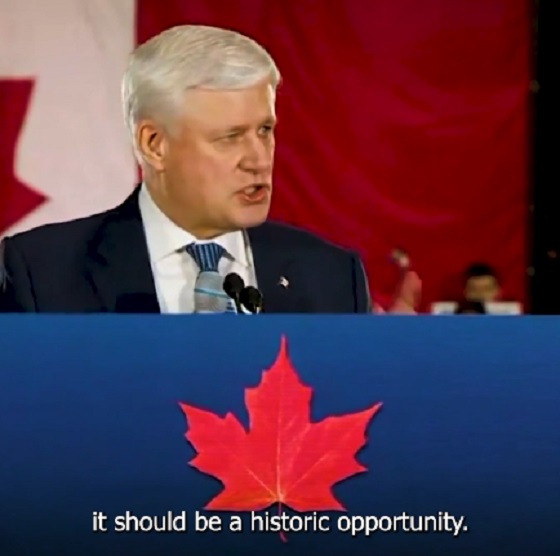
 2025 Federal Election2 days ago
2025 Federal Election2 days agoHarper Endorses Poilievre at Historic Edmonton Rally: “This Crisis Was Made in Canada”
-
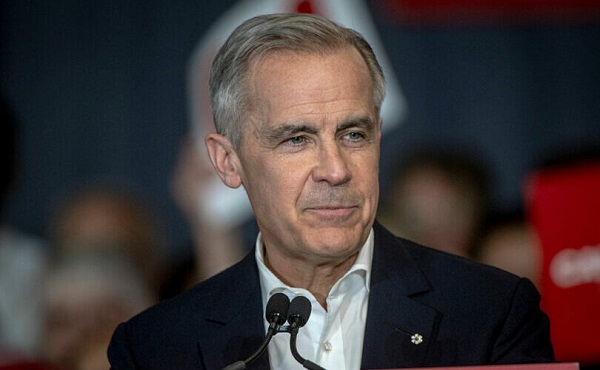
 2025 Federal Election2 days ago
2025 Federal Election2 days agoMark Carney’s radical left-wing, globalist record proves he is Justin Trudeau 2.0
-
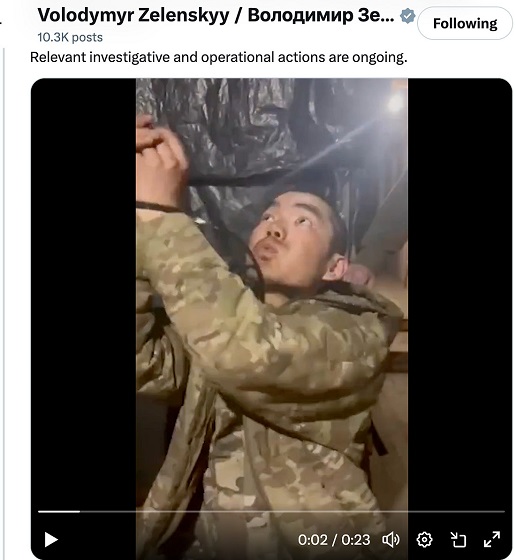
 conflict2 days ago
conflict2 days agoZelensky Alleges Chinese Nationals Fighting for Russia, Calls for Global Response
-

 2025 Federal Election2 days ago
2025 Federal Election2 days agoAn In-Depth Campaign Trail “Interview” With Pierre Poilievre
-
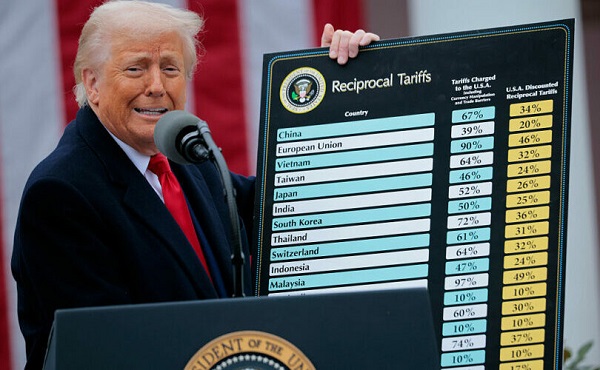
 Business2 days ago
Business2 days agoTrump’s tariff plan replaces free trade with balanced trade. Globalists hate that.
-

 2025 Federal Election19 hours ago
2025 Federal Election19 hours agoConservative Party urges investigation into Carney plan to spend $1 billion on heat pumps
-
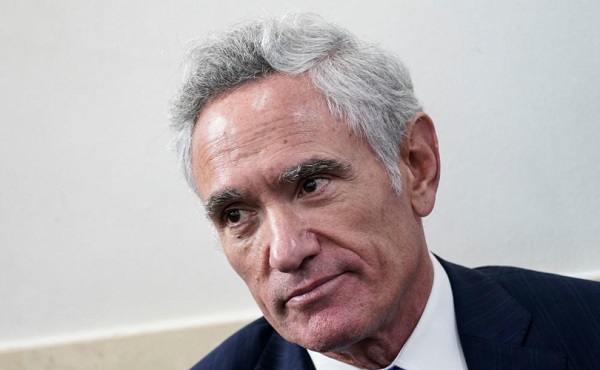
 Censorship Industrial Complex2 days ago
Censorship Industrial Complex2 days agoScott Atlas: COVID lockdowns, censorship have left a ‘permanent black mark on America’
-
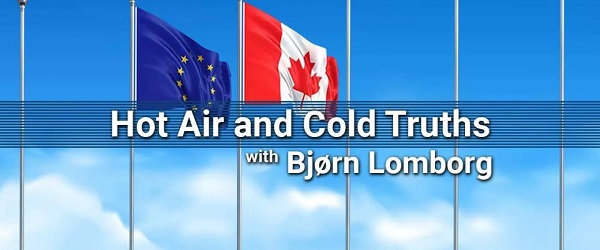
 2025 Federal Election2 days ago
2025 Federal Election2 days agoDon’t double-down on net zero again



